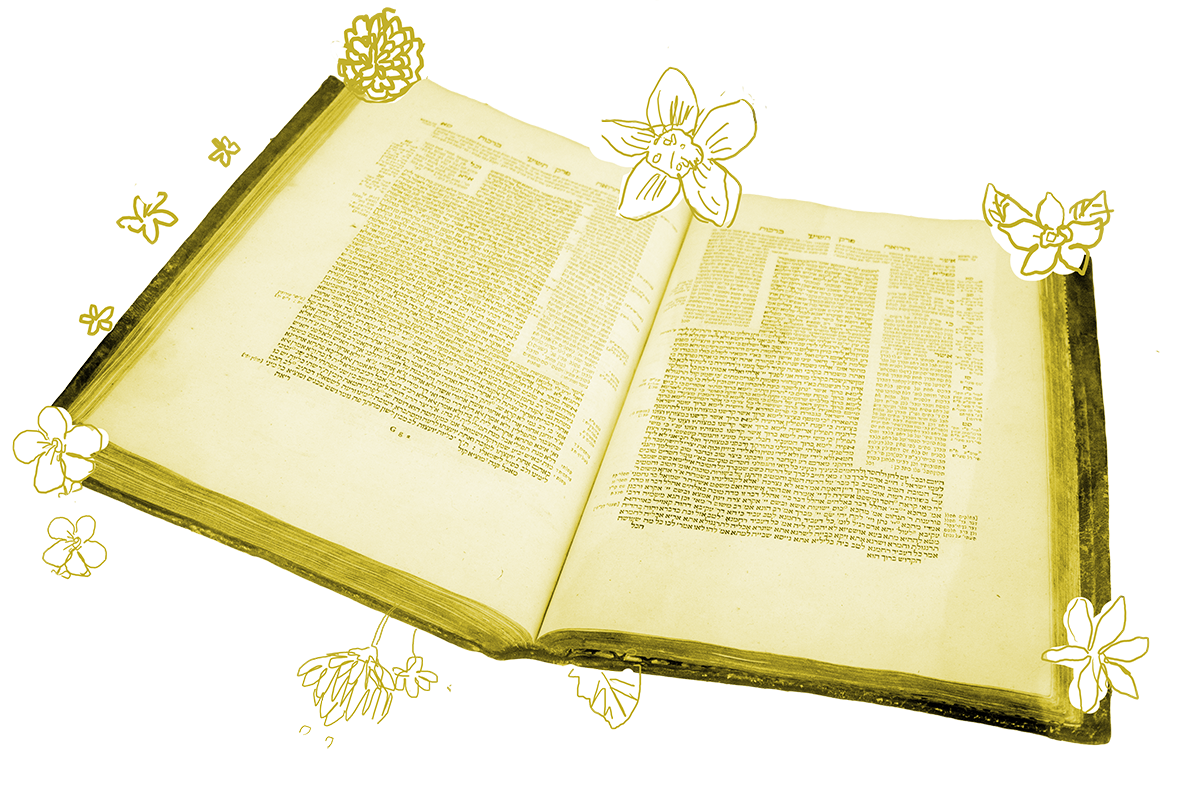On today’s daf, we start chapter two of Bava Metzia with a mishnah that lists items that, if you find, you get to keep:
Scattered produce, scattered coins, bundles (of grain) in a public area, round cakes of figs, baker’s loaves, strings of fish, cuts of meat, wool fleeces that are taken from their state (of origin directly after shearing), flax stalks, or strips of purple wool.
What is common to this list of items that makes it permissible for someone who finds them to claim them as their own? All of them are devoid of distinguishing marks that would enable their owners to claim them. A pile of loose change, loaves of bread, bundles of grain — all these are indistinguishable from one another, which would make it impossible for an owner to establish that a particular one belongs to them. So it makes good sense that if they are found, the finder can keep them.
In a few pages, we’re going to encounter another mishnah with a list of found items about which the public must be notified so the owner can claim them. Whereas our mishnah says that you can keep scattered produce, that mishnah says that produce inside a vessel and piles of produce must be announced.
With your help, My Jewish Learning can provide endless opportunities for learning, connection and discovery.
What’s the difference between a pile of fruit and scattered fruit? The former appears to have been placed, whereas the latter appears to have been dropped. If the produce was intentionally left where it was, it’s likely the owner is aware that it’s there and is coming back to get it. And if they are coming back for it, it’s not lost, so someone who finds it shouldn’t be permitted to take it.
On the other hand, if the produce fell, the owner might not even know that it’s missing. When they eventually discover that it is, they will most likely have no clue where they dropped it and will despair of its return. In such a case, it’s finders keepers.
Since the right of the finder hinges on whether produce is scattered or in a pile, naturally the Gemara is curious about how we distinguish between these two arrangements. Fortunately, Rabbi Yitzhak gives us a clear rule:
Rabbi Yitzhak says: One kav in four cubits.
This is a great answer, since it provides a clear formula for determining whether produce is scattered. If one kav (a little over a quart) of produce is found in an area of four by four cubits, it’s a pile and belongs to the one who placed it there. Anything less is scattered and up for grabs.
Not so fast, says the Gemara. The density of the produce shouldn’t matter as much as its appearance. If it appears to have fallen, it should belong to the finder even if the density is above the limit. And if it looks like a pile, the finder should announce it even if the density is below the limit.
Rav Ukva bar Hama comes to explain that Rabbi Yitzhak’s density principle was created specifically for use during the harvest season to evaluate wheat that remains on the threshing floor. How so?
One kav in four cubits, whose (gathering requires) great exertion, a person does not exert himself and does not return and take them. He renounces ownership of them. Smaller than that area, (the owner) exerts and returns and takes them and does not renounce ownership of them.
In other words, the formula proposed by Rabbi Yitzhak was merely a way of estimating whether fallen produce on the threshing floor was worth the exertion of collecting it. What matters is not ultimately the specific density of the fallen produce, but how much effort is required to reclaim it. If it is worth the effort for someone to come back and get what has fallen, then the produce still belongs to them. If it’s not, the one who found it can keep it, since the owner is not coming back for it.
As the opening conversation of this chapter makes clear, there is no one rule that determines which objects can be kept and which must be returned. Instead, it suggests a number of factors that we should take into account. Does the item have an identifying mark? Was it placed or dropped? Is it worth the effort to come back and get it?
As an occasional finder of things, I understand well that the decision about what to do with what I’ve found is not black and white. Although it does not give clear and concrete directions, neither does the Talmud leave us to muddle along in the gray zone. Rather, it provides a list of factors to consider. And there’s much wisdom to be found in this approach.
Read all of Bava Metzia 21 on Sefaria.
This piece originally appeared in a My Jewish Learning Daf Yomi email newsletter sent on March 20th, 2024. If you are interested in receiving the newsletter, sign up here.



